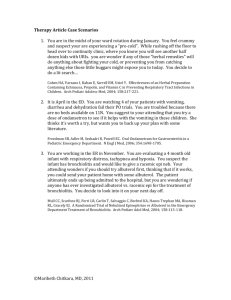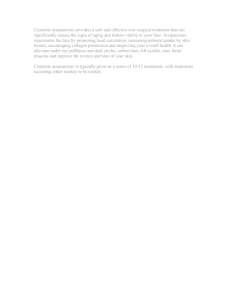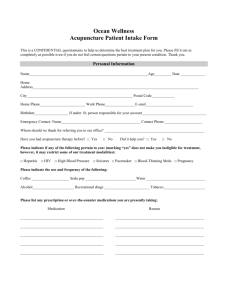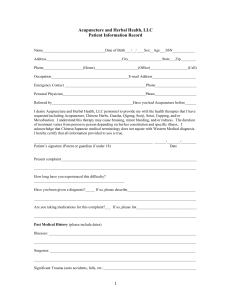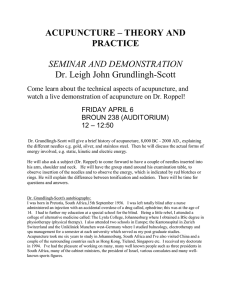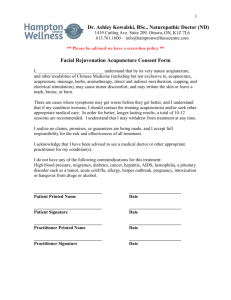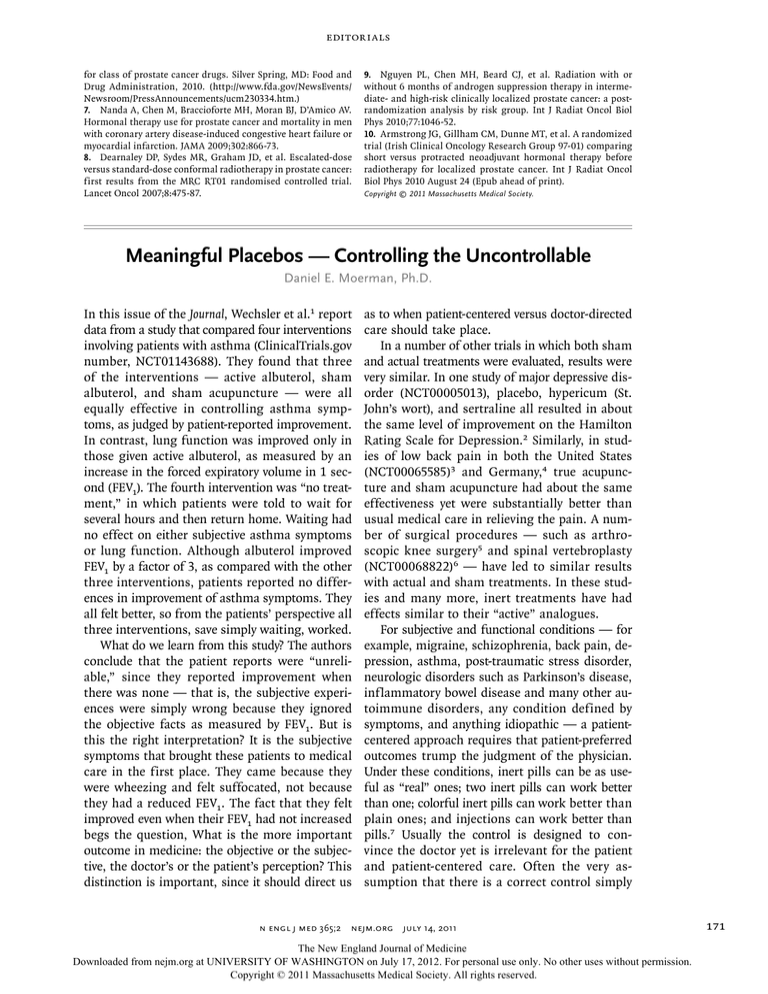
editorials
for class of prostate cancer drugs. Silver Spring, MD: Food and
Drug Administration, 2010. (http://www.fda.gov/NewsEvents/
Newsroom/PressAnnouncements/ucm230334.htm.)
7. Nanda A, Chen M, Braccioforte MH, Moran BJ, D’Amico AV.
Hormonal therapy use for prostate cancer and mortality in men
with coronary artery disease-induced congestive heart failure or
myocardial infarction. JAMA 2009;302:866-73.
8. Dearnaley DP, Sydes MR, Graham JD, et al. Escalated-dose
versus standard-dose conformal radiotherapy in prostate cancer:
first results from the MRC RT01 randomised controlled trial.
Lancet Oncol 2007;8:475-87.
9. Nguyen PL, Chen MH, Beard CJ, et al. Radiation with or
without 6 months of androgen suppression therapy in intermediate- and high-risk clinically localized prostate cancer: a postrandomization analysis by risk group. Int J Radiat Oncol Biol
Phys 2010;77:1046-52.
10. Armstrong JG, Gillham CM, Dunne MT, et al. A randomized
trial (Irish Clinical Oncology Research Group 97-01) comparing
short versus protracted neoadjuvant hormonal therapy before
radiotherapy for localized prostate cancer. Int J Radiat Oncol
Biol Phys 2010 August 24 (Epub ahead of print).
Copyright © 2011 Massachusetts Medical Society.
Meaningful Placebos — Controlling the Uncontrollable
Daniel E. Moerman, Ph.D.
In this issue of the Journal, Wechsler et al.1 report
data from a study that compared four interventions
involving patients with asthma (ClinicalTrials.gov
number, NCT01143688). They found that three
of the interventions — active albuterol, sham
albuterol, and sham acupuncture — were all
equally effective in controlling asthma symptoms, as judged by patient-reported improvement.
In contrast, lung function was improved only in
those given active albuterol, as measured by an
increase in the forced expiratory volume in 1 second (FEV1). The fourth intervention was “no treatment,” in which patients were told to wait for
several hours and then return home. Waiting had
no effect on either subjective asthma symptoms
or lung function. Although albuterol improved
FEV1 by a factor of 3, as compared with the other
three interventions, patients reported no differences in improvement of asthma symptoms. They
all felt better, so from the patients’ perspective all
three interventions, save simply waiting, worked.
What do we learn from this study? The authors
conclude that the patient reports were “unreliable,” since they reported improvement when
there was none — that is, the subjective experiences were simply wrong because they ignored
the objective facts as measured by FEV1. But is
this the right interpretation? It is the subjective
symptoms that brought these patients to medical
care in the first place. They came because they
were wheezing and felt suffocated, not because
they had a reduced FEV1. The fact that they felt
improved even when their FEV1 had not increased
begs the question, What is the more important
outcome in medicine: the objective or the subjective, the doctor’s or the patient’s perception? This
distinction is important, since it should direct us
as to when patient-centered versus doctor-directed
care should take place.
In a number of other trials in which both sham
and actual treatments were evaluated, results were
very similar. In one study of major depressive disorder (NCT00005013), placebo, hypericum (St.
John’s wort), and sertraline all resulted in about
the same level of improvement on the Hamilton
Rating Scale for Depression.2 Similarly, in studies of low back pain in both the United States
(NCT00065585)3 and Germany,4 true acupuncture and sham acupuncture had about the same
effectiveness yet were substantially better than
usual medical care in relieving the pain. A number of surgical procedures — such as arthro­
scopic knee surgery5 and spinal vertebroplasty
(NCT00068822)6 — have led to similar results
with actual and sham treatments. In these studies and many more, inert treatments have had
effects similar to their “active” analogues.
For subjective and functional conditions — for
example, migraine, schizophrenia, back pain, depression, asthma, post-traumatic stress disorder,
neurologic disorders such as Parkinson’s disease,
inflammatory bowel disease and many other autoimmune disorders, any condition defined by
symptoms, and anything idiopathic — a patientcentered approach requires that patient-preferred
outcomes trump the judgment of the physician.
Under these conditions, inert pills can be as useful as “real” ones; two inert pills can work better
than one; colorful inert pills can work better than
plain ones; and injections can work better than
pills.7 Usually the control is designed to convince the doctor yet is irrelevant for the patient
and patient-centered care. Often the very assumption that there is a correct control simply
n engl j med 365;2 nejm.org july 14, 2011
The New England Journal of Medicine
Downloaded from nejm.org at UNIVERSITY OF WASHINGTON on July 17, 2012. For personal use only. No other uses without permission.
Copyright © 2011 Massachusetts Medical Society. All rights reserved.
171
editorials
is not the case. One observer has noted that, to
most medical people, this way of thinking simply makes no sense at all; rather, it makes as
much sense as filling up the gas tank with Earl
Grey tea.8
All medical procedures (active or inert) are
meaningful — that is, they represent something
— and meaning has effects. Clinicians often dress
up in special uniforms that convey power and authority. They have very expensive machines that
can look inside your heart or brain. All this, plus
the magnificence of the hospital building (ours
has two helipads!), the decor of the office, the
lights of the operating room, the computers on
every lap, the magical prescription pad, and the
caring nurse, piles up meaning with increasing
power regardless of what may be in the capsule
or syringe.7
These meanings create expectations that can
dramatically modify the effectiveness of even the
most powerful proven treatments. In a recent experiment, the average effects of the opioid remifentanil were either doubled or extinguished by
manipulating subject expectations; functional
magnetic resonance imaging scans showed that
regulatory brain mechanisms differed as a function of these expectations.9 Does this mean that
we might double our gas mileage if we wished
for it hard enough? Well, no. But people are not
machines, and we shouldn’t treat them as such.
Do we need to control for all meaning in order to show that a treatment is specifically ef-
fective? Maybe it is sufficient simply to show that
a treatment yields significant improvement for the
patients, has reasonable cost, and has no negative effects over the short or long term. This is,
after all, the first tenet of medicine: “Do no harm.”
Disclosure forms provided by the author are available with the
full text of this article at NEJM.org.
From the University of Michigan–Dearborn, Dearborn.
1. Wechsler ME, Kelley JM, Boyd IOE, et al. Active albuterol or
placebo, sham acupuncture, or no intervention in asthma. N Engl
J Med 2011;365:119-26.
2. Hypericum Depression Trial Study Group. Effect of Hypericum perforatum (St John’s wort) in major depressive disorder:
a randomized controlled trial. JAMA 2002;287:1807-14.
3. Cherkin DC, Sherman KJ, Avins AL, et al. A randomized
trial comparing acupuncture, simulated acupuncture, and usual
care for chronic low back pain. Arch Intern Med 2009;169:85866.
4. Haake M, Müller HH, Schade-Brittinger C, et al. German
Acupuncture Trials (GERAC) for chronic low back pain: randomized, multicenter, blinded, parallel-group trial with 3 groups.
Arch Intern Med 2007;167:1892-8.
5. Moseley JB, O’Malley K, Petersen NJ, et al. A controlled trial
of arthroscopic surgery for osteoarthritis of the knee. N Engl J
Med 2002;347:81-8.
6. Kallmes DF, Comstock BA, Heagerty PJ, et al. A randomized
trial of vertebroplasty for osteoporotic spinal fractures. N Engl J
Med 2009;361:569-79.
7. Moerman DE. Meaning, medicine, and the “placebo effect.”
Cambridge, United Kingdom: Cambridge University Press, 2002.
8. Morris DB. Placebo, pain, and belief: a biocultural model. In:
Harrington AE, ed. The placebo effect an interdisciplinary exploration. Cambridge, MA: Harvard University Press, 1997:187207.
9. Bingel U, Wanigasekera V, Wiech K, et al. The effect of treatment expectation on drug efficacy: imaging the analgesic benefit of the opioid remifentanil. Sci Transl Med 2011;3:70ra14.
Copyright © 2011 Massachusetts Medical Society.
receive the journal’s table of contents each week by e-mail
To receive the table of contents of the Journal by e-mail
every Wednesday evening, sign up at NEJM.org.
172
n engl j med 365;2 nejm.org july 14, 2011
The New England Journal of Medicine
Downloaded from nejm.org at UNIVERSITY OF WASHINGTON on July 17, 2012. For personal use only. No other uses without permission.
Copyright © 2011 Massachusetts Medical Society. All rights reserved.

